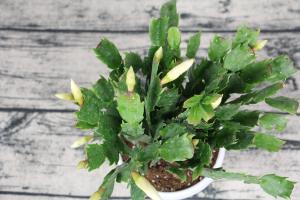When to Plant Tomatoes in the Pacific Northwest
Tomatoes are a popular and versatile vegetable that can be grown practically anywhere. However, the specific timing for planting tomatoes in the Pacific Northwest can be a little tricky due to the region's wet and cool climate.
First Things First: Know Your Climate Zone
The first step in determining when to plant tomatoes in the Pacific Northwest is to know your climate zone. The Pacific Northwest spans several USDA hardiness zones, from zone 5 in eastern Washington to zone 9 in southwest Oregon. Your specific location within this region will determine the optimal planting time for your tomatoes.
Timing is Key
In general, the best time to plant tomatoes in the Pacific Northwest is between late April and early June. However, timing can vary depending on the climate zone and specific weather conditions. Here are a few factors to consider:
Soil Temperature
Tomatoes thrive in warm soil, so it's important to wait until the soil temperature is at least 55℉ before planting. This can be a challenge in the Pacific Northwest, where the soil can remain cool and damp well into spring. To warm up the soil, consider using black plastic mulch or floating row covers.
Last Frost Date
Planting too early can also expose your tomatoes to frost damage. Be sure to check the last frost date for your area and avoid planting tomatoes until after that date. This is especially important in cooler climate zones, where frost can occur well into May.
Daytime Temperatures
Tomatoes require warm daytime temperatures to grow properly. Ideally, daytime temperatures should be consistently above 60℉. In cooler climate zones, this may mean waiting until late May or early June to plant.
Choosing the Right Variety
Another factor to consider when planting tomatoes in the Pacific Northwest is the variety you choose. Look for varieties that are specifically bred for cooler climates and shorter growing seasons. Some popular varieties include:
Early Girl
Early Girl is a popular variety that produces medium-sized, flavorful fruit in just 50-60 days. It grows well in cool weather and is resistant to disease.
Black Krim
Black Krim is a heirloom variety that produces large, juicy fruit with a rich flavor. It has a longer growing season than Early Girl, but is still a good option for cooler climates.
Stupice
Stupice is a Czechoslovakian variety that is known for its early, abundant yields. It produces small to medium-sized fruit with a tangy flavor.
Care Tips Once Planted
Once you've got your tomato plants in the ground, there are a few things you can do to help them thrive in the Pacific Northwest climate:
Provide Plenty of Water
The Pacific Northwest is known for its rainy weather, but your tomatoes still need plenty of water to grow properly. Aim for 1-2 inches of water per week, either from rainfall or supplemental watering.
Protect from Wind
The Pacific Northwest is also known for its gusty winds, which can damage or uproot tomato plants. Consider planting your tomatoes in a sheltered location or using stakes or cages to provide support.
Control Pests and Diseases
The cool and damp climate of the Pacific Northwest can encourage pests and diseases in your tomato plants. Be sure to keep a close eye out for signs of damage or infection, and take steps to control pests and diseases as soon as possible.
Conclusion
Growing tomatoes in the Pacific Northwest can be a rewarding experience - if you know when and how to plant them. Consider your climate zone and the specific weather conditions in your area when choosing a planting time and variety, and be sure to provide proper care and protection for your plants once they're in the ground. With a little patience and perseverance, you can enjoy juicy, flavorful tomatoes all summer long.

 how many times do yo...
how many times do yo... how many planted tre...
how many planted tre... how many pine trees ...
how many pine trees ... how many pecan trees...
how many pecan trees... how many plants comp...
how many plants comp... how many plants can ...
how many plants can ... how many plants and ...
how many plants and ... how many pepper plan...
how many pepper plan...































